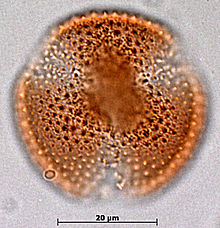| Caltha obtusa | |
|---|---|

| |
| Scientific classification | |
| Kingdom: | Plantae |
| Clade: | Tracheophytes |
| Clade: | Angiosperms |
| Clade: | Eudicots |
| Order: | Ranunculales |
| Family: | Ranunculaceae |
| Genus: | Caltha |
| Species: | C. obtusa |
| Binomial name | |
| Caltha obtusa Cheeseman, 1901 | |
| Synonyms | |
| |
Caltha obtusa; commonly known as white caltha; is a small (usually 2–6 cm), perennial herbaceous plant belonging to the family Ranunculaceae, that grows in open vegetations in mountainous areas, and is endemic to New Zealand's South Island.
Etymology
The generic name Caltha has been derived from the Ancient Greek: κάλαθος (kalathos), means "goblet", and refers to the shape of the flower. The species epithet obtusa is Latin and means "blunt".
Distribution and ecology
The white caltha can be found in the mountains of New Zealand's South Island, from Canterbury southwards. It grows along alpine streams, seepages, around mountain lakes. It also occurs in moist open grasslands and wet places among gravel and herbs.
Description

Caltha obtusa is a small (2–6 cm high), hairless, perennial herb. Plants form mats of rosettes. Its white rhizomes are stout and fleshy. The spade-shaped leaves have slender petioles of 8–12 mm long that form a membranous sheathing base. The leaf blade is dark green to yellowish green and sometimes with bronze blotches or streaks, are 8–12 × 7½-11 mm with two lobes at its base, with an indent at its tip and deeply scalloped edges, particularly near the base. The basal lobes (or appendages) are mostly pressed against the upper surface of the leaf, are more than half as long and also have a deeply scalloped outer margin. The five white sepals are 8–18 mm long and 6–12 mm wide, obovate, widest between the tip and the middle, and have an obtuse to acute tip. There are between ten and fifteen stamens encircling free narrow-ovate carpels each about 4–5 mm long and topped by a rather long and slender style. Flowers are said to smell like lemon. The fruiting heads are 12–18 mm across. Follicles reach 1¼-1½ cm in length. Seeds may ripen seldom. Flowering occurs between December and February, and fruits can be found from February until April. There are forty eight chromosomes (2n = 48).
Differences from related species
Caltha obtusa differs from Caltha novae-zelandiae by the oblong-obovate white rather than linear pale yellow sepals, and by the leaf margins which are scalloped and almost lobed at the base rather than slightly scalloped to entire.
References
- Cheeseman, T. F. (1901). "Some Recent Additions to the New Zealand Flora". Transactions and Proceedings of the New Zealand Institute. 33: 312. ISSN 1176-6158. Wikidata Q115589158.
- "Caltha obtusa". The Plantlist. Retrieved 2016-01-19.
- "Psychrophila obtuse". wikispecies. Retrieved 2016-01-19.
- ^ P.J. de Lange. "Caltha novae-zelandiae". New Zealand Plant Conservation Network. Retrieved 2016-01-19.
- "Caltha obtusa observed by Alice Shanks". NatureWatch. Retrieved 2016-01-19.
- "Caltha obtusa". New Zealand Flora. Retrieved 2016-01-19.
- Eric Schuettpelz & Sara B. Hoot (2004). "Phylogeny and biogeography of Caltha (Ranunculaceae) based on chloroplast and nuclear DNA sequences". American Journal of Botany. 91 (2): 247–253. doi:10.3732/ajb.91.2.247. PMID 21653380.